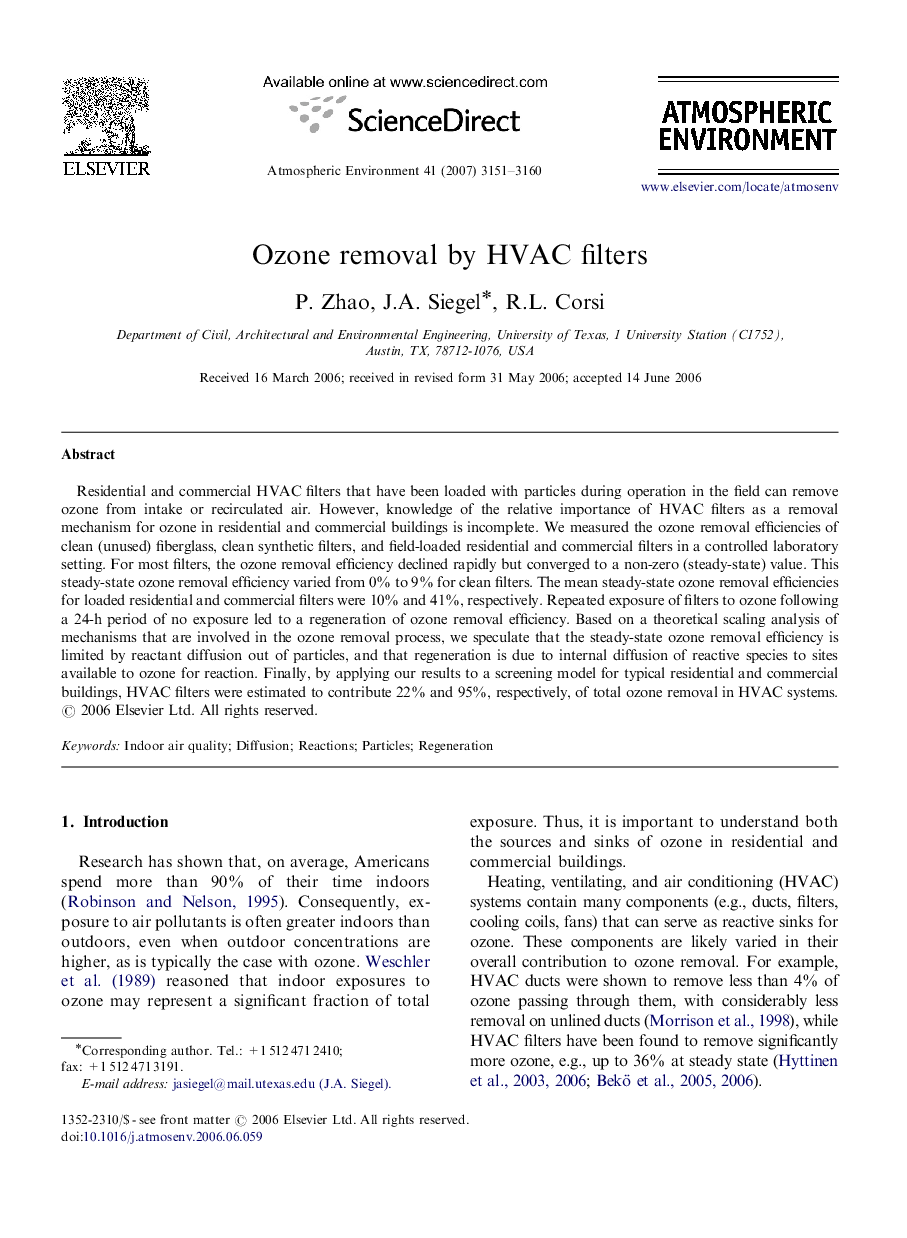| Article ID | Journal | Published Year | Pages | File Type |
|---|---|---|---|---|
| 4442809 | Atmospheric Environment | 2007 | 10 Pages |
Residential and commercial HVAC filters that have been loaded with particles during operation in the field can remove ozone from intake or recirculated air. However, knowledge of the relative importance of HVAC filters as a removal mechanism for ozone in residential and commercial buildings is incomplete. We measured the ozone removal efficiencies of clean (unused) fiberglass, clean synthetic filters, and field-loaded residential and commercial filters in a controlled laboratory setting. For most filters, the ozone removal efficiency declined rapidly but converged to a non-zero (steady-state) value. This steady-state ozone removal efficiency varied from 0% to 9% for clean filters. The mean steady-state ozone removal efficiencies for loaded residential and commercial filters were 10% and 41%, respectively. Repeated exposure of filters to ozone following a 24-h period of no exposure led to a regeneration of ozone removal efficiency. Based on a theoretical scaling analysis of mechanisms that are involved in the ozone removal process, we speculate that the steady-state ozone removal efficiency is limited by reactant diffusion out of particles, and that regeneration is due to internal diffusion of reactive species to sites available to ozone for reaction. Finally, by applying our results to a screening model for typical residential and commercial buildings, HVAC filters were estimated to contribute 22% and 95%, respectively, of total ozone removal in HVAC systems.
